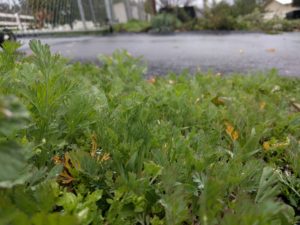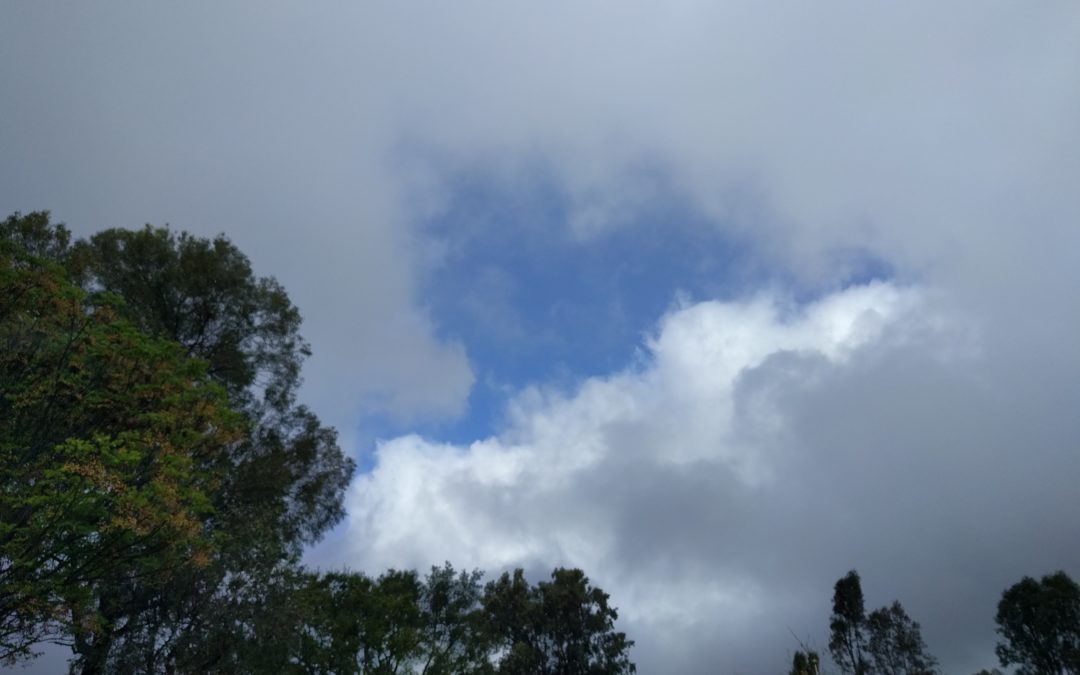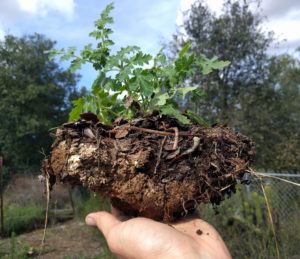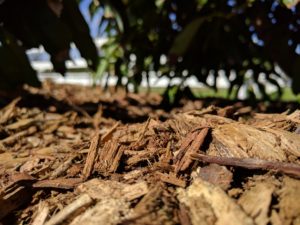I get frantic when rain is forecast. Southern California doesn’t get rain often, so I really feel the need to take advantage of each event. Rain provides ideal conditions for certain garden tasks. Some are best done just before the rain starts, some during the precipitation, and others soon after a storm moves on.
I need a list of what to do and when to do it; maybe you do too.
Remove lid from compost bin. Let the rain moisten the compost materials to help them break down.
Sow seeds. Then you won’t have to worry about watering them. Plus, if they’re small seeds that need to be sown shallowly, then you can just sprinkle them on the soil surface and the rain will stick them in place; a few weeks later you’ll see them up and growing. Think especially of small seeds like lettuce, parsely, carrots, and poppies.

I sprinkled these California poppy seeds just as it began to mist during that rain we got back on January 9, 2018, and I’ve had to do nothing since except watch them grow.
Transplant. The cool and humid environment helps plants endure the shock of being uprooted and given a new home. I’ve found that live oak saplings do best when transplanted just before or during a rain, as do boysenberries and raspberries, and vegetable seedlings. I once transplanted a six-foot tall apricot tree during a rain and it never skipped a beat. Don’t try this if you have a heavy clay soil though.
Collect rainwater. Of course! Put that trashcan under the downspout. Make room in the rain tank.
Direct rainwater. Give the rain that falls on a roof or porch or driveway a course to follow toward soil. This can be an artificial riverbed below a downspout (as I wrote about in my post, “Rain makes dreams come true”), or it can be a hose connected to a small rain barrel that directs the rain over to some fruit trees. (See my post, “Getting rainwater from a barrel to your plants.”) See how I collect and direct rain in my yard in this video from December 2018.
Mulch. Apply a new layer of wood chips or compost under fruit trees. In early winter, I prefer to lay new mulch after a few inches of rain has fallen so the mulch doesn’t prevent the rain from reaching the soil below. In late winter, you can lay new mulch before a rain so the rain saturates the mulch for free.
Mow. Less sneezing while the grasses and other weeds are moist soon after a rain. Seeds are also less likely to blow into other areas and spread the weeds.
Pull weeds. Roots come out easily in the moist soil that a rain has created. Also, if there are no seeds on the weeds, you can leave them on the surface to dry out and enrich the soil. Remember not to try this with certain weeds like purslane, which will root again into moist soil. It’s also better to chop off larger weeds “below the waist” rather than uproot them. For more explanation on that, see my post, “How to outsmart garden weeds.”
Finally, smell the sage. To me, it is the aroma of Southern California after a rain. Whether it be black sage, white sage, or sagebrush, this perfume in the air is uniquely here. If you don’t have sage in your yard, well, after a rain is a perfect time to take a hike in the nearby sage-covered hills.
You might also like to read:
Collecting rain from roofs
Fertile soil can be child’s play
(for more on the myriad benefits of a wood-chip mulch under trees)







thanks so much
what a list to guide me thru the next couple of days!!
Nothing quite like the smell of the earth after a long-awaited rain.
And I get to throw this word around:
pet·ri·chor
/ˈpeˌtrīkôr/
noun
a pleasant smell that frequently accompanies the first rain after a long period of warm, dry weather.
Hi Keely,
I’m going outside right now to see if I can sense the petrichor!
This is a fantastic less, Greg! Thank you for sharing! I especially agree with smelling the sage, smells like California.